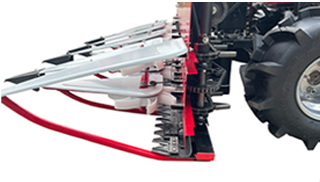Nov . 10, 2024 03:37 Back to list
Understanding the Key Differences Between Brake Drums and Brake Rotors
The Difference Between Brake Drums and Rotors
When it comes to vehicle braking systems, the choice of components is critical for ensuring safety and performance. Two of the most common types of brake systems found in vehicles today are those that utilize brake drums and those that utilize rotors. While both serve the primary function of slowing down or stopping a vehicle, they do so using different mechanisms and have distinct characteristics.
1. Design and Structure
Brake drums are typically found in older vehicles and some lower-end models. They are cylindrical components that enclose the brake shoes. When the brakes are applied, hydraulic pressure pushes the shoes outward against the inner surface of the drum, generating friction that slows the vehicle down. The design of brake drums is relatively simple, consisting of a round metal shell with a friction surface on its interior.
In contrast, brake rotors are flat, disc-shaped components that are usually found in modern vehicles, especially those with front disc brakes. When the brake pedal is pressed, brake calipers squeeze brake pads against the rotor, creating friction that slows the vehicle. This design allows for better heat dissipation compared to drums, as the flat surface of the rotor is exposed to air, helping to prevent brake fade during prolonged use.
One of the most significant differences between brake drums and rotors is their performance under different conditions. Brake rotors generally provide superior stopping power and performance, particularly in high-speed scenarios or during aggressive driving. This is partly due to their ability to dissipate heat more effectively, which reduces the risk of brake fade—when brakes lose effectiveness due to excessive heat buildup.
difference between brake drums and rotors

On the other hand, brake drums can be less efficient than rotors, particularly during intense braking conditions. The enclosed design of drums can trap heat, leading to a decrease in performance over time. Additionally, the reliance on mechanical contact between the shoes and the drum surface may result in less responsive braking compared to the more direct action of rotors and pads.
3. Maintenance and Longevity
From a maintenance perspective, brake drums tend to require more frequent checks and servicing than rotors. Because the brake shoes are housed inside the drum, they can wear unevenly, and the internal surfaces can accumulate dust and debris, affecting performance. On the flip side, the maintenance of rotors is often more straightforward since the brake pads are easily accessible. Rotors can also last longer if maintained properly, although they can warp or become damaged due to excessive heat and use.
4. Weight and Cost Implications
In terms of weight, brake drums are generally heavier than rotors. This can affect the overall weight and fuel efficiency of a vehicle, particularly in race cars or high-performance models where every pound counts. Additionally, the cost can vary; while brake drums may be less expensive upfront, the overall maintenance costs can add up over time compared to a vehicle equipped with rotors.
5. Conclusion
In summary, the choice between brake drums and rotors ultimately depends on the specific needs and usage of the vehicle. Brake drums are often more economical and simpler but can fall short in performance and maintenance efficiency. On the other hand, brake rotors offer superior braking performance, heat dissipation, and ease of maintenance, making them the preferred choice for most modern vehicles. When assessing which system to use, it is essential to consider factors such as vehicle type, driving conditions, and personal preferences for performance and maintenance. Understanding the differences between these two crucial components can help vehicle owners make informed decisions regarding their braking systems.
-
Scania Brake Drums: OEM Quality for Optimal Safety & Durability
NewsAug.16,2025
-
R.V.I: Advanced Remote Visual Inspection for Precision
NewsAug.15,2025
-
Discover HYUNDA: Innovative Vehicles, Equipment & Solutions
NewsAug.14,2025
-
R.V.I: Unlock Advanced Insights & Real-time Performance
NewsAug.13,2025
-
Kamaz Brake Drum: Durable & Reliable for Heavy Duty Trucks
NewsAug.12,2025
-
Heavy Duty Iveco Brake Drum - Premium Quality & Safety
NewsAug.11,2025
